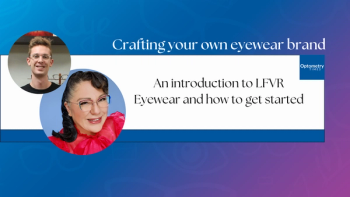
What's on the clinical wishlist for dry eye with Dr Bridgitte Shen Lee
Bridgitte Shen Lee, OD, FAAO, FBCLA, FEAOO, ponders about what she would like to see develop as both a researcher and a clinician in the dry eye space.
With 26 years of clinical experience and 4 years as a principal investigator, Bridgitte Shen Lee, OD, FAAO, FBCLA, FEAOO, sat down with Optometry Times to examine the areas of progress still needed from both research- and practice-based perspectives. Shen Lee provided a nuanced view of current challenges and potential future directions in dry eye treatment. From a clinical standpoint, the primary concern is insurance coverage for advanced dry eye treatments. Despite having numerous technological and pharmacological interventions that can significantly improve patient quality of life, insurance limitations often prevent patients from accessing these cutting-edge solutions. As a researcher, Shen Lee emphasized several key areas of potential innovation in dry eye treatment:
Combination therapies
There's a strong interest in developing treatments that simultaneously address multiple aspects of dry eye, such as combining immune modulation, anti-inflammatory agents, and nerve stimulation. The goal is to provide faster and more comprehensive relief for patients.
Preventative approaches
Instead of just treating symptoms, the focus is shifting towards understanding and preventing the initial inflammatory cascade. This includes exploring new medications and procedural interventions that can interrupt the early stages of dry eye development.
Targeted interventions
Shen Lee highlighted emerging treatments targeting specific mechanisms, such as:
- Procedures addressing meibomian gland dysfunction
- Anti-friction molecules to reduce corneal damage
- More precise diagnostic tests
- Nerve regeneration treatments, particularly for neurotrophic keratitis
A significant breakthrough mentioned is the FDA-approved biologic treatment using recombinant human nerve growth factor, which is effective but faces substantial insurance coverage challenges. Shen Lee is optimistic about the future, noting that both large pharmaceutical companies and smaller device manufacturers are actively researching innovative solutions in the ocular surface space. The ultimate goals are to provide more accessible, comprehensive, and personalized treatments that can restore patients' quality of life and prevent progressive eye surface damage.
Newsletter
Want more insights like this? Subscribe to Optometry Times and get clinical pearls and practice tips delivered straight to your inbox.


















































.png)


